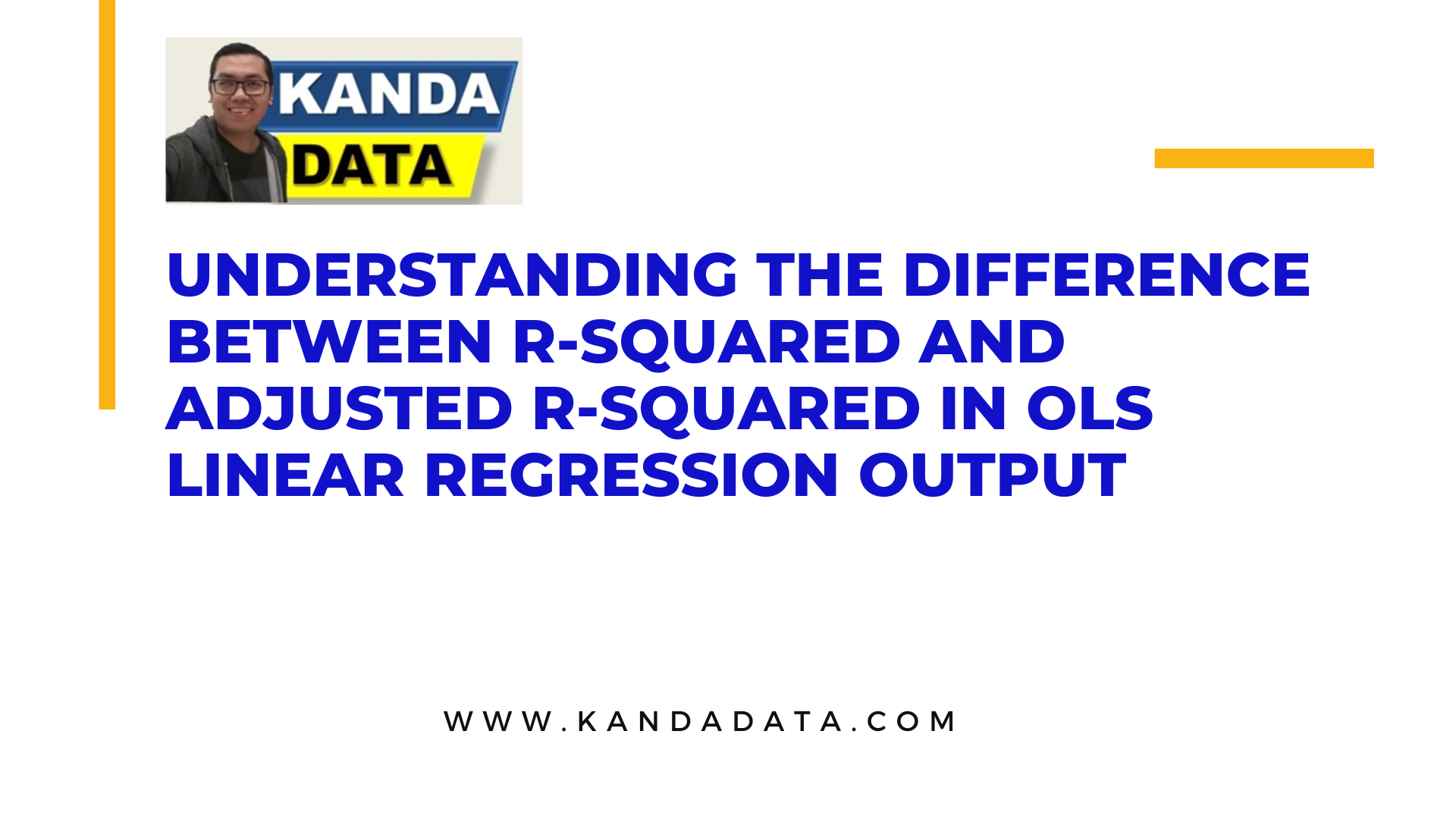Blog
Understanding the Difference Between R-squared and Adjusted R-squared in OLS Linear Regression Output
R-squared (R²) and Adjusted R-squared (R² adjusted) are key metrics frequently used to assess the effectiveness of a linear regression model. The R-squared value provides information about the proportion of variability in the dependent variable explained by the independent variable in the linear regression equation.
In OLS linear regression analysis, researchers encounter the R-squared value in the output. Alongside R-squared, researchers also consider the adjusted R-squared value. What distinguishes the R-squared value from the adjusted R-squared value? This question prompted Kanda Data to delve into writing an article on the differences between R-squared and adjusted R-squared in OLS linear regression output.
OLS Linear Regression Analysis
Linear regression analysis using the Ordinary Least Squares (OLS) method is widely employed by researchers to model the linear relationship between one or more independent variables (predictors) and a single dependent variable. OLS is a method used to minimize the sum of squared residuals between the predicted values by the model and the actual observed values.
OLS provides unbiased and optimal estimates if the basic assumptions of the model are met. These assumptions involve a linear relationship between variables, residual independence, homoscedasticity, normality of residuals, and the absence of multicollinearity. If these assumptions are satisfied, the analysis yields the Best Linear Unbiased Estimator.
However, if these assumptions are not met, it can impact the interpretation of results and the reliability of the model. Therefore, it is essential to conduct a series of assumption tests in OLS linear regression analysis.
Differences in R-squared and Adjusted R-squared in Output
The output of OLS linear regression analysis generally includes the R-squared (R²) value, ranging between 0 and 1. In addition to R-squared, the output also features the adjusted R-squared value.
R-squared (R²) and Adjusted R-squared (R² adjusted) are two commonly used metrics in linear regression output. These values offer insights into how well the OLS linear regression model performs. However, aside from these metrics, researchers also need to consider regression assumption values, parameter significance tests, and other factors.
While R-squared measures the proportion of variability in the dependent variable explained by the independent variables, adjusted R-squared evaluates the model’s performance, taking into account the number of independent variables in the regression model. R² adjusted considers the increase in R-squared value when additional independent variables are added to the model.
The primary difference between R-squared and adjusted R-squared is that R-squared does not consider the number of independent variables, whereas adjusted R-squared incorporates an adjustment for the number of independent variables. Generally, the adjusted R-squared value is slightly lower than the R-squared value.
R-squared and adjusted R-squared values
Both R-squared and adjusted R-squared values range from 0 to 1, where 0 indicates that the model does not explain any variation in the data, and 1 indicates a perfect fit.
A model with R-squared and adjusted R-squared values of zero may suggest that the model does not fit the data, or the chosen independent variables cannot explain the variation in the dependent variable. If both values are equal to 1, the model is considered perfect, although achieving R-squared and adjusted R-squared values of 1 is rare.
It is crucial to emphasize that despite the R-squared and adjusted R-squared values falling within the 0 to 1 range, researchers need to understand the differences between them. The main distinction lies in R-squared’s disregard for the number of independent variables, whereas adjusted R-squared includes an adjustment for the number of independent variables. In certain situations, adjusted R-squared can provide a more accurate picture of the model’s quality, especially when dealing with multiple independent variables.
Interpreting R-squared and Adjusted R-squared Values
A value of R-squared approaching 1 indicates that the model can explain a significant portion of the variation in the dependent variable. For example, in an OLS linear regression analysis, if the R-squared value is 0.78, it can be interpreted that 78% of the variability in the dependent variable is explained by the independent variables, with the remaining 22% attributed to other variables not included in the regression model.
The interpretation of adjusted R-squared follows a similar approach, with the added understanding that adjusted R-squared includes an adjustment for the number of independent variables in the model. Adjusted R-squared tends to be lower than R-squared if there are insignificant independent variables.
Adjusted R-squared provides an indication of how much the addition of independent variables significantly contributes to the model. A model with a high adjusted R-squared can be considered better in depicting the relationship between the dependent and independent variables in the OLS linear regression equation.
Conclusion
R-squared and Adjusted R-squared are essential metrics in OLS linear regression analysis. Both metrics offer insights into the performance of the linear regression model. While R-squared disregards the number of independent variables, adjusted R-squared incorporates an adjustment for the number of independent variables.
By understanding and considering both metrics, researchers can gain a better understanding of the extent to which the model represents the relationship between the dependent and independent variables in the observed data. Stay tuned for more informative articles from Kanda Data in the coming weeks.
